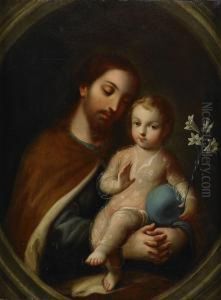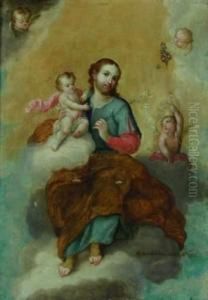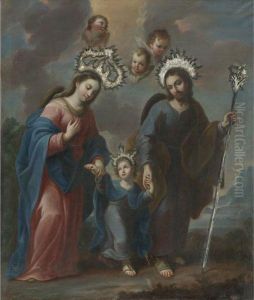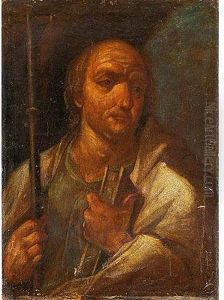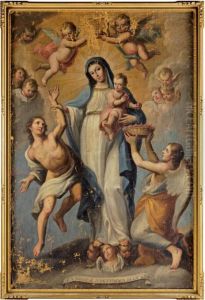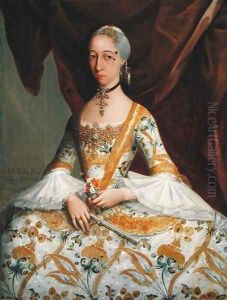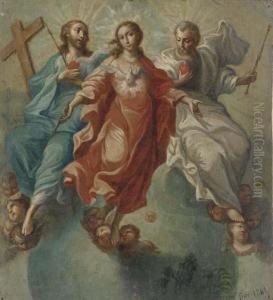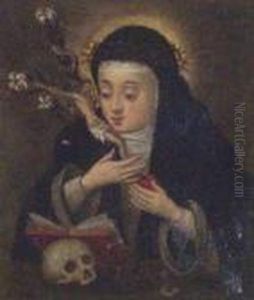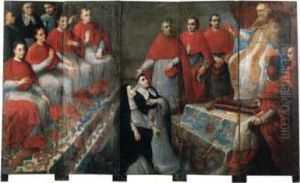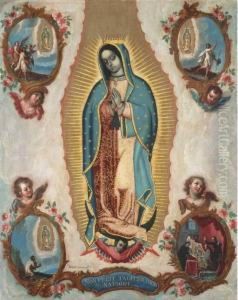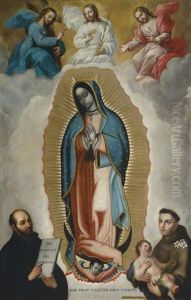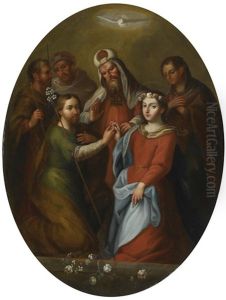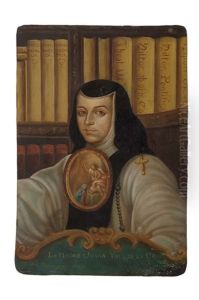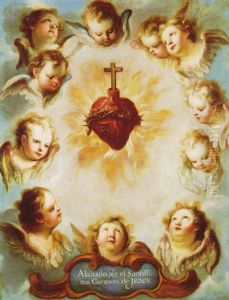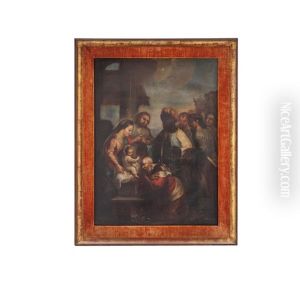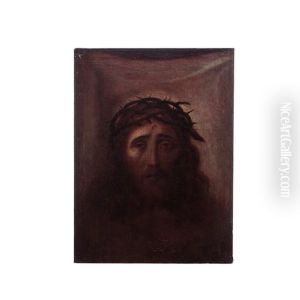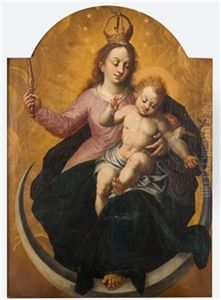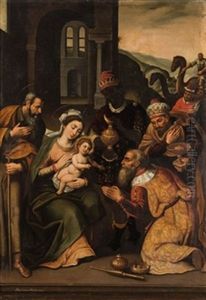Miguel Cabrera Paintings
Miguel Cabrera was one of the most prominent painters of the colonial period in Mexico. Born on March 27, 1695, in Mexico City, then part of the Viceroyalty of New Spain, Cabrera is considered by many art historians to be the greatest painter of his time in Mexico. His work is often cited as a prime example of Mexican Baroque painting.
Cabrera's early life is not well documented, but it is known that he was of mixed race, often referred to as 'mestizo', which influenced both his life and his art. He was apprenticed to a painter at a young age, which was typical for artists at the time. Cabrera quickly gained recognition for his talent and began to receive important commissions.
Throughout his career, Cabrera primarily worked on religious subjects, as was common in the colonial era. He painted numerous portraits of the Virgin Mary, saints, and other religious figures, and his work was characterized by rich coloration, meticulous detail, and the use of light and shadow to create depth. Cabrera's paintings were not only beautiful but also served as didactic tools in the effort to convert Indigenous peoples to Christianity.
One of Cabrera's most significant contributions to Mexican art was his book 'Maravilla Americana', which focused on the image of the Virgin of Guadalupe. He conducted a study to prove the divine origin of the image, which was an important symbol for Mexican identity and faith. His work in this regard helped elevate the Virgin of Guadalupe to a position of national prominence.
Cabrera was not only a painter but also a teacher, and he established an academy of art in Mexico City. He played a key role in training the next generation of Mexican artists, thus having a lasting impact on the development of Mexican art. His influence extended beyond his own students as his paintings set the standards for beauty and technique in the region.
Miguel Cabrera died on May 16, 1768, in Mexico City. Today, his work is housed in many major museums in Mexico and has been subject to numerous exhibitions and research studies, highlighting his role as a leading figure in the development of Mexican art during the colonial period.

